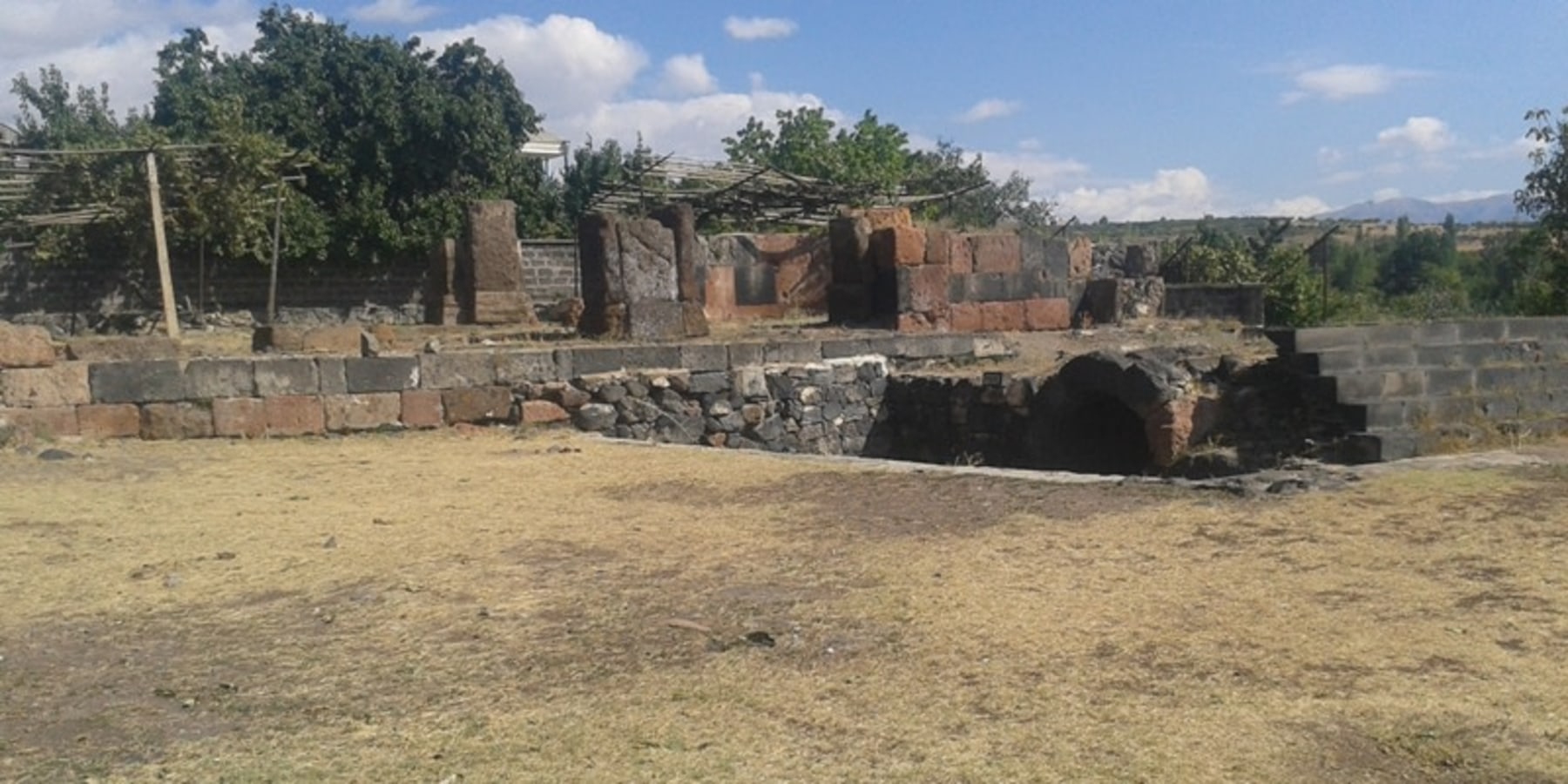
According to 5th century historian Pavstos Buzand, troops of the Sassanid king Shapuh II destroyed the Arshakuni ancestral burial place at Ani-Kamah and "captured the Arshakuni Kings' remains, failing only to open the burial vault of King Sanatruk which was an enormous and incredibly strong and ingeniously built structure.” The remains of the other kings were carried to Persia in an effort to dispirit the Armenians and according to legend thereby eclipse their power. The Sparapet Vasak Mamikonian (ca. mid 4th century), after defeating the Persians in battle, retook the bones and carried them to the newly built mausoleum church here, where they were reburied, pagan kings separated from Christian in the lower chamber, thus restoring the prestige of the kingdom.
The mausoleum continued to be used until the 5th century when the line of Arshakuni kings ended. It eventually fell to invasions and earthquakes and the later historian, Movses Khorenatsi, wrote that a decision was finally made to inter them in Vagharshapat (Echmiadzin). Enter the lower chamber, a small space with niches on the north and south and a semi-circular apse at the east end. In the niches you will find two ossuaries (bone vaults) where the bones of the Arshakuni kings were kept. Their carvings incorporate early Christian and pagan motifs. On the right (S) is a design of the biblical story of Daniel in the Lion's Den and a motif of rams, evoking the predicament Armenia was in at the time, caught between the jaws of the Sassanids and Byzantine Rome. On the opposite side (N) is a picture of fantastic mythical heroes or gods, with astrological imagery of birds, a bull calf amid a grape vine, a cross in a circle with two birds perched on top and a hunter with two dogs striking a wild boar.



